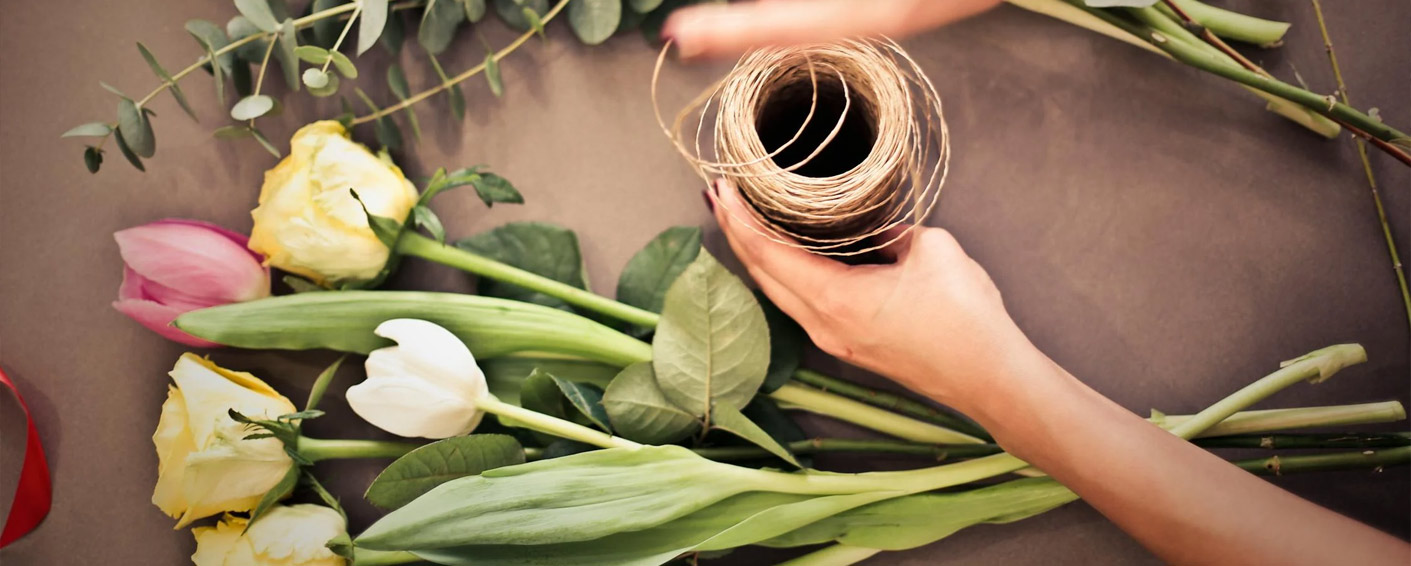Blossoming Entrepreneurship: A Guide from Hobbyist to Professional Floral Designer
For many floral enthusiasts, the dream of turning their passion for flowers into a thriving business is both exciting and daunting. Transitioning from a hobbyist to a professional floral designer requires careful planning, dedication, and a dash of entrepreneurial spirit. In this blog post, we’ll explore the essential steps to help you navigate this journey and launch your own successful floral design business.
Cultivate Your Skills: Honing Your Craft
Before diving into entrepreneurship, invest time and effort in refining your floral design skills. Take classes, workshops, or online courses to learn advanced techniques, expand your floral knowledge, and stay updated on industry trends. Practice regularly, experiment with different styles and arrangements, and seek feedback to continuously improve your craft. Building a strong foundation as a skilled floral designer is essential for establishing credibility and delivering high-quality work to your clients.
Define Your Niche: Finding Your Unique Selling Proposition
In a competitive market, carving out a niche for your floral design business is crucial for standing out and attracting your ideal clients. Consider what sets you apart from other floral designers. Do you specialize in weddings, corporate events, or intimate gatherings? Are you known for your expertise in a particular style, such as modern minimalist or lush garden-inspired arrangements? Define your unique selling proposition (USP) based on your strengths, passions, and target market preferences to differentiate your brand and appeal to potential clients.
Develop a Business Plan: Mapping Out Your Path to Success
Transforming your floral design hobby into a profitable business requires strategic planning and goal setting. Create a detailed business plan outlining your mission, vision, target market analysis, competitive landscape, pricing strategy, marketing plan, and financial projections. Consider factors such as startup costs, overhead expenses, pricing structure, and revenue streams to ensure your business is sustainable and profitable in the long run. Your business plan serves as a roadmap guiding your decisions and actions as you launch and grow your floral design venture.
Build Your Brand: Crafting a Memorable Identity
Your brand identity is the essence of your floral design business and plays a pivotal role in attracting clients and fostering trust and loyalty. Develop a cohesive brand identity that reflects your unique style, values, and personality. Create a compelling brand name, logo, website, and marketing materials that resonate with your target audience and convey professionalism and creativity. Consistency across all brand touchpoints helps establish brand recognition and credibility in the competitive floral industry.
Market Your Business: Attracting Your Ideal Clients
Effective marketing is essential for reaching and engaging potential clients and generating business for your floral design venture. Utilize a mix of online and offline marketing strategies to promote your services and showcase your portfolio. Create a visually stunning website and leverage social media platforms like Instagram, Pinterest, and Facebook to share your work, connect with your audience, and build a strong online presence. Network with wedding planners, event venues, and other industry professionals to expand your reach and secure referrals. Additionally, consider participating in bridal shows, pop-up markets, or community events to showcase your talent and attract local clients.
Provide Exceptional Service: Building Lasting Relationships
In the floral design business, providing exceptional service and creating memorable experiences for your clients is paramount for building a loyal customer base and generating positive word-of-mouth referrals. Focus on delivering personalized attention, excellent communication, and attention to detail throughout the client experience, from the initial consultation to the execution of the event. Listen to your clients’ preferences, offer creative solutions, and go above and beyond to exceed their expectations. Building strong relationships with your clients not only fosters repeat business but also establishes you as a trusted expert in the industry.
Evolve and Adapt: Embracing Growth and Change
As you embark on your journey from hobbyist to professional floral designer, embrace opportunities for growth, learning, and adaptation. Stay curious, explore new techniques and trends, and continuously seek ways to innovate and evolve your business. Be open to feedback, learn from challenges and setbacks, and remain flexible in adjusting your strategies and offerings to meet the evolving needs of your clients and the market. By embracing change and staying committed to excellence, you’ll position yourself for long-term success and fulfillment in your floral design career.
Launching your own floral design business is an exciting and rewarding endeavor that allows you to turn your passion for flowers into a fulfilling profession. By cultivating your skills, defining your niche, developing a solid business plan, building a memorable brand, implementing effective marketing strategies, providing exceptional service, and embracing growth and adaptation, you can navigate the transition from hobbyist to professional floral designer with confidence and success. Remember, with dedication, creativity, and perseverance, your floral design dreams can blossom into a flourishing business that brings beauty and joy to countless celebrations and events.




